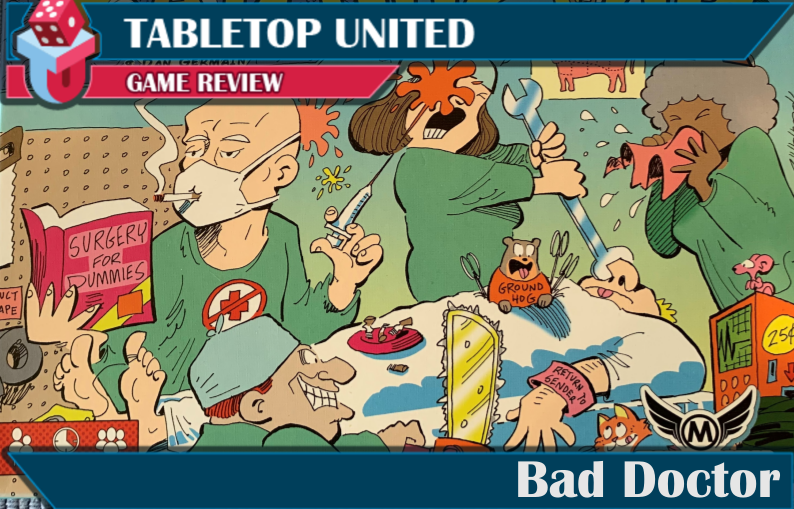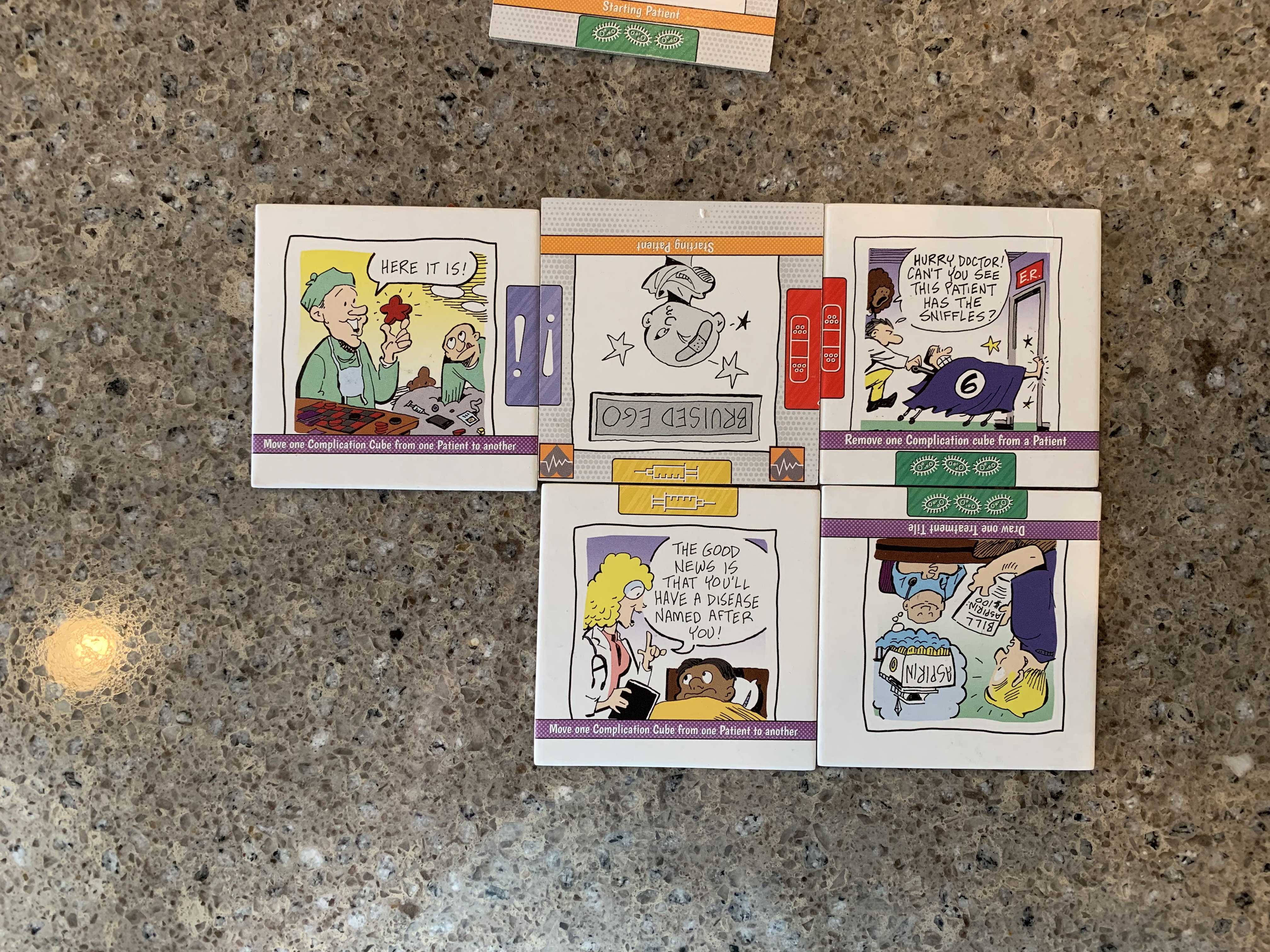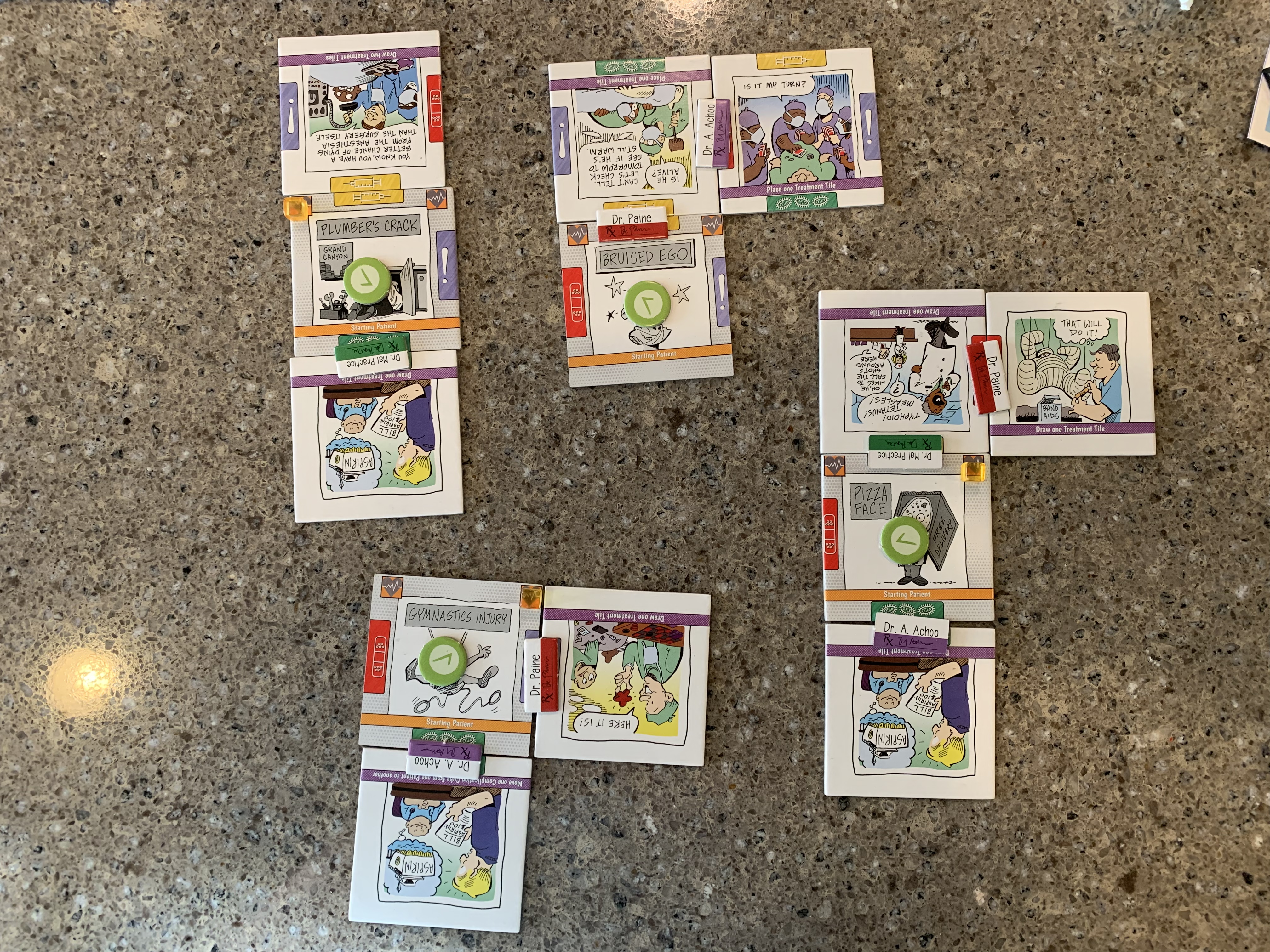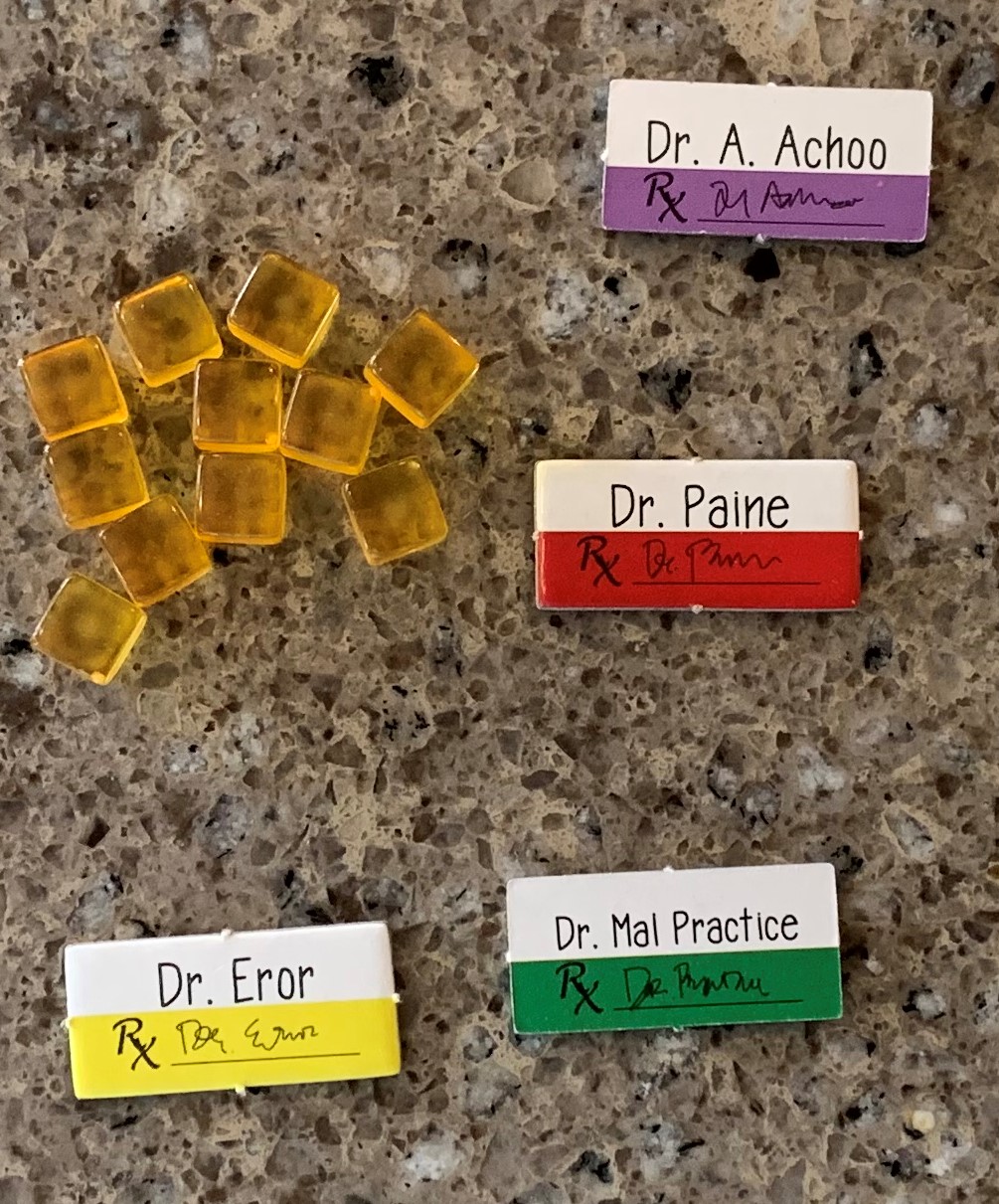
Bad Doctor
Designer: Eric Magnan, Dan Germain
Artist: Kristina Arwood, Bill Holbrook
Publisher: Mayday Games
Year Published: 2018
No. of Players: 2–4
Ages: 10+
Playing Time: 30–40 Minutes
Main mechanic / Theme: Tile Placement / Humorous Medical
You need to keep the patients alive—at least until your shift is over.
Find more info on BoardGameGeek.com
Overview
Being a doctor is hard work as you do your best to heal the patients. Being a bad doctor is about doing enough to keep from having your patients die on your shift.
Bad Doctor is a parody game of working in a bad hospital in bad conditions. It isn’t about who can save the most lives, it is about looking like you are doing what you can to save the most lives.
Not all patients are going to make it out alive in Bad Doctor. In fact, few will. Seldom can all the patients’ conditions be treated during your shift (turn) and complications then set in.
Three of us played a couple of games of Bad Doctor and found it had an interesting twist to the strategy for gaining points. We enjoyed it and found the second game to be different from the first because of the use of a tile placement mechanic requiring matching treatment types. One treatment may, and usually leads to needing another one or more.

Gameplay and Mechanics
Each player has a set number of Doctor Markers (the number of markers depends on the number of players) and 2 Treatment Tiles, placed face up, to go with their Doctor Board (player’s aid card).
The game starts with 4 predetermined starting patients, which are place in the middle of the playing field. These will likely need to be slid around as treatment cards are added, so make sure you have a little extra room. The rest of the Patients and Treatment Tiles are stacked face down for later draws. The Complication Cubes, used to track patient health, are also placed in the middle. On each of the Patients, place a Shift Token for tracking during a player’s shift.
The first turn of play for each player is a little different, but the gameplay is essentially the same.
Each player’s turn consists of four phases.
Take 2 Actions
This is a must—take 2 actions. The actions are placing and drawing Treatment Tiles. There is no passing.
Playing treatment tiles requires that the type of Malady matches the treatment. There are four types of Maladies and most Treatment Tiles don’t treat all types. When you play a Treatment Tile, you place a Doctor Marker on the connection space of the Malady to show who treated it. These are used for scoring later.
Each of the Treatment Tiles has a Treatment Tile Bonus which is also performed when the tile is played. These bonus actions are important for helping you make your rounds and check in on patients.
When a patient is visited by the doctor flip the Shift Token to show they’ve were checked on that shift.
Remove and Score Cured Patients
Any Patients who has all their Malady spaces treated (this includes the ones on the Patient and any added by playing Treatment Tiles) are cured.
The player who cured the Patient removes the Patient from play, collects their Doctor Markers and places them in their score pile, and returns the other players Doctor’s Markers to be placed back in their available supply.
Add Complication Cubes
Any Patient unchecked during the player’s shift gains a complication. The cubes are placed on the Patient Tile in the heartbeat boxes. If the boxes are all covered, that patient died on that player’s shift.
Patients that die are removed from play. The Doctor who lost the patient returns other players’ Doctor Markers which are placed in their score pile. The player who lost the patient returns their markers from the patient back to their supply and then removes one from the game.
Prepare for the Next Shift
If a player has 8 or more Doctor Markers in their score pile, the game ends and the player with the most in the score pile wins.
If not, flip the Shift Tokens to the unvisited side and if there are fewer than 4 Patients, draw additional ones until there are 4.

Theme, Artwork and Illustration, Graphic Design and Layout
The theme is a little macabre for some. You let patients die at some point, and most of the time you are strategizing to have a patient die on another player’s shift so you can score. More points were scored through death than through healing.
The artwork was created by Bill Holbrook and Kristina Arwood. It reflects the humorous nature intended for Bad Doctor. The comical look shows patients and treatments are not meant to be taken as actual medical conditions or the work of real doctors.
Final thoughts
I had fun playing Bad Doctor. The change in strategy of working to keep patients alive for someone else to falter on provided a nice change. The design of the number of patients to the number of actions taken by a player means that almost every turn leads to complications being added. This means you have to not only play tiles in a way that match the malady, but you also need to look at the bonus action.
The tiles create a puzzle mechanic that can lead to additional tiles needing to be played to heal more maladies than the treatment solves. The bonus actions also lead to making sure you play your tiles in the correct order. Because all your Treatment Tiles are face up, everybody knows what other players can treat.
I recommend Bad Doctor for players who enjoy puzzle strategy.

About the Author
Daniel Yocom does geeky things at night because his day job won't let him. This dates back to the 1960s through games, books, movies, and stranger things better shared in small groups. He's written hundreds of articles about these topics for his own blog, other websites, and magazines after extensive research along with short stories. His research includes attending conventions, sharing on panels and presentations, and road-tripping with his wife. Join him at guildmastergaming.blogspot.com.
